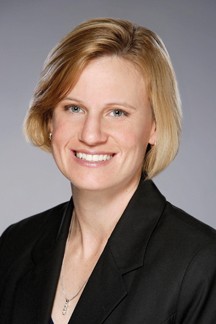What You Should Know About Skin Cancer

By Dr. Katherine A. Sahm, M.D., F.A.C.S.
Skin cancer may initially appear as a bump, nodule or irregular patch on the surface of the skin. As the cancer grows, the shape of the skin mass can change. As the changes are occurring the cancer is likely expanding and moving into the lower layer of the skin.
Most suspected skin cancers are often first noticed by the patient or a family member before they are brought to the attention of a doctor.
There are 3 basic types of skin cancer and some are more serious than others:
Squamous Cell Carcinoma:
These cancers account for approximately 20 percent of non-melanoma skin cancers. They develop from squamous cells that make up the outermost portion of the skin, the epidermis. This cancer tends to occur on areas that have been exposed to the sun such as the neck, face, ears, back and hands. It can, however, occur in other areas, such as in scars or skin ulcers or in the genital area.
These cancers usually grow slowly and it is not uncommon for them to spread or metastasize. They are more likely than basal cell carcinomas to invade fatty tissue beneath the skin or spread even further.
To diagnose skin cancer the doctor will take a complete medical history and ask the patient about past exposure to the sun and other known causes of skin cancer, and whether he or she has a personal or family history of skin conditions. It is important to ascertain when the mark appeared and whether it has changed in size or appearance. He or she will perform a skin examination and may check for enlarged lymph nodes.

There are some who continue to be sun worshipers and there are some who continue to seek the “golden tan” despite the fact that we know that sun damage can lead to skin cancer. It is not just sun worshipers that can get skin cancer but also those who have had over-exposure from their younger years or those who work outside over long periods of time. There are 3.5 million cases of skin cancer diagnosed every year in this country.
Treatment:
Most squamous cell carcinomas can be cured if detected and treated early. But because this type of skin cancer can grow quickly, delaying treatment could make it more difficult to cure.
There are numerous treatment options that are available, and most are easily performed in the doctor’s office. The treatment decision is based on whether the squamous cell is high or low-risk, which is based on the risk of recurrence. Other considerations include the patient’s age, general health, medical history, and cosmetic preferences.
Basal cell Carcinoma:
It tends to occur in areas of skin that receive the most exposure to the sun, like the head and neck. They usually grow slowly and it is rare for them to spread, or metastasize to lymph nodes. However, this can occur if the cancer is left untreated so early detection is key.
If the two above are caught early they can be treated with very noninvasive techniques such as a cream. The goal is to keep these types of areas under control prior to it becoming a problem.
Basal cell is very treatable by a medical professional and requires a medical diagnosis. Lab tests or imaging may be required.
Malignant Melanoma:
The most serious type of skin cancer represents only three percent of skin cases but encompasses over 75 percent of deaths.
If left untreated skin cancer will grow down to the dermis and the subcutaneous tissues. In the most advanced stages, skin cancer may spread into nearby muscle tissue, cartilage or bone. Once cancer spreads into the blood or lymph fluids, it may reach other areas in the body such as the liver or lungs.
If your doctor thinks that a particular patch of skin may be a melanoma, you will have a biopsy, in which a small piece of tissue is removed. A pathologist will examine the tissue under a microscope to determine whether melanoma cells are present.
Ways to prevent Skin Cancer:
Avoid sun exposure. Most damage is typically done at a very early age in early childhood; however, the risk accumulates over time so at any age you can take steps to address overexposure. Apply sunscreen when you are outside as frequently as possible.
Many people believe that you can only experience sun damage on a clear sunny day where it is bright, warm and sunny but damage can occur all year long.
Call today to make an appointment with Dr. Katherine A. Sahm, M.D., F.A.C.S. for a preventative skin assessment at 302.475.4900.
Dr. Sahm says…
I am a native Delawarean trained in minimally invasive surgery and general surgery. I have sought out further training in wound care and hyperbaric medicine and am certified in wound care. I served two tours as a forward surgeon in Iraq in 2008 and 2010. I am a participating breast surgeon at the Helen Graham Cancer Center. I enjoy getting to know my patients and their families and caring for their surgical needs.





